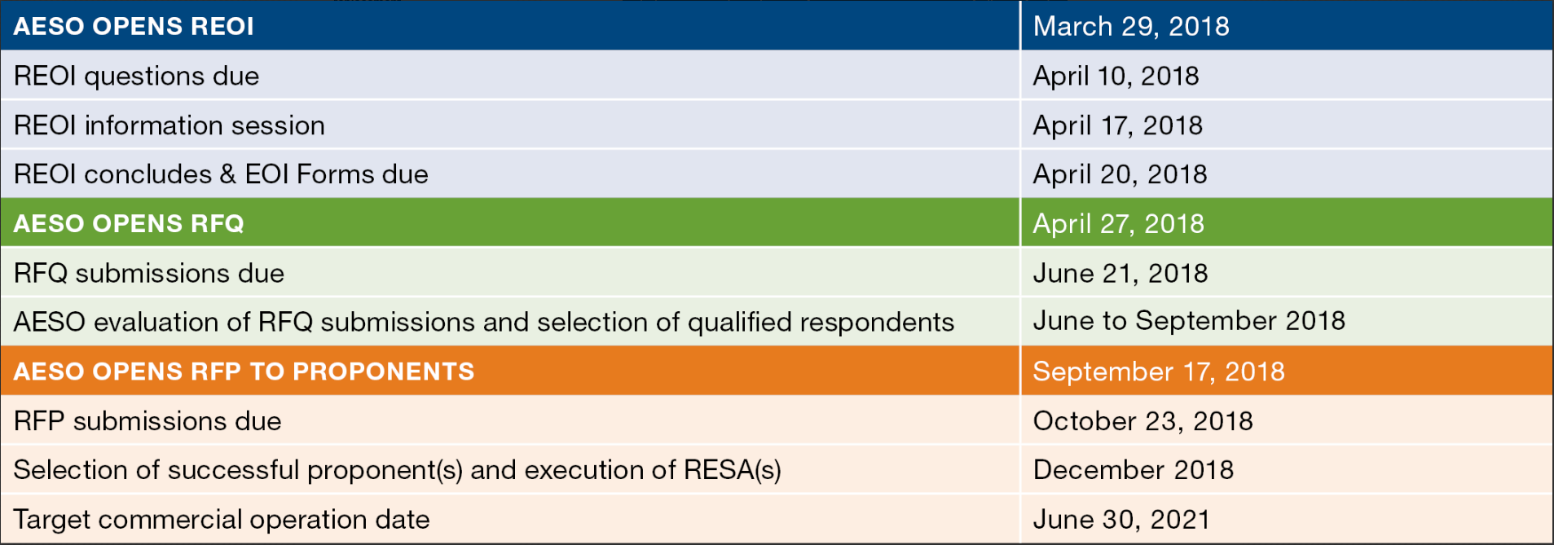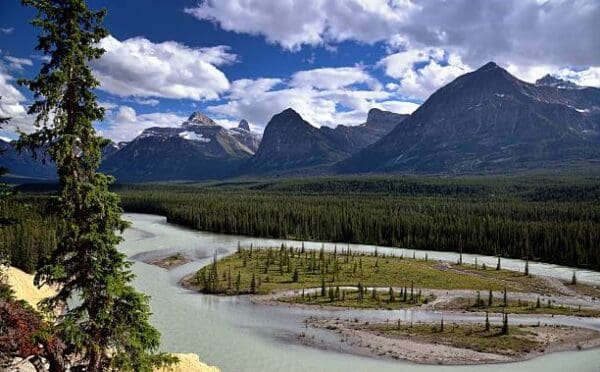On March 29, 2018, the Alberta Electric System Operator (AESO) launched Rounds 2 and 3 of its Renewable Electricity Program (REP).
The REP is intended to incentivize the development of renewable energy projects in Alberta through a series of competitive processes aimed at adding 5,000 megawatts (MW) of renewable generating capacity to the system. For a general overview of the REP, please refer to our April 5, 2017 Osler Update.
For both Rounds 2 and 3, the Government of Alberta will provide price-indexed support payments to successful project proponents in the form of an Indexed Renewable Energy Credit (REC). Successful proponents will enter into Renewable Electricity Support Agreements (RESAs) to develop, finance, build, own, operate and maintain renewable energy projects. The RESAs will set out the terms and conditions governing the REC provided in exchange for renewable attributes from the projects.
Rounds 2 and 3 of the REP will be largely the same as REP Round 1, except that Round 2 includes an Indigenous equity ownership requirement. The AESO has confirmed that REP Rounds 2 and 3 will be exclusive with a renewables project only being permitted to compete in either REP Round 2 or 3, and renewables projects will not be allowed to switch rounds during the competitive process.
The total procurement target for REP Round 2 is 300 MW, with the minimum project size set at 5 MW. As the REP Round 1 was for 400 MW and ~600 MW was procured, the government may yet again exceed the procurement target. The total procurement target for REP Round 3 is up to 400 MW, again with a minimum project size of 5 MW.
REP Round 2 and 3 phases and timeline
The AESO has announced the following timeline for REP Rounds 2 and 3:

The first phase of participation in REP Rounds 2 and 3 requires the submission of a response to the Request for Expressions of Interest (REOI), in the form of an Expression for Interest (EOI) Form. More information about EOIs for REP Round 2 is available here [PDF], and REP Round 3, here [PDF].
Interested parties may submit questions regarding the REOI or REP Rounds 2 and 3, and have been encouraged to attend a related information session, in accordance with the timeline set out below. EOI Forms for both REP Rounds 2 and 3 are due by 3:30 p.m. MDT on April 20, 2018 and are available here [PDF] (REP Round 2) and here [PDF] (REP Round 3).
Similar to REP Round 1, the REOI phases will be followed by a Request for Qualification (RFQ) phase where the AESO will assess whether respondents and projects meet specified eligibility criteria and are entitled to proceed to the final Request for Proposal (RFP) phase, where the AESO will award RESA contracts to the successful respondents and projects that have submitted the lowest bid price. For a more detailed discussion of each of the three phases, please see our April 5, 2017 Osler Update.
Project requirements
Eligibility criteria for REP Rounds 2 and 3 include that the project must be (i) new or expanded renewable electricity generation projects located in Alberta; (ii) able to connect to the existing distribution or transmission system; and (iii) commercially operational by June 30, 2021. Further, eligible fuels must meet the definition of renewable energy resources, as defined in Alberta’s Renewable Electricity Act.
The AESO clarified that REP Round 3 projects will only be evaluated for their ability to connect to the existing transmission or distribution system after REP Round 2 projects have been assessed.
REP Round 2
REP Round 2 reiterates the Government of Alberta’s commitment to encouraging greater participation by Indigenous communities in Alberta’s goal to attain a higher portion of electricity generation from renewable energy resources. REP Round 2 requires projects to have a minimum 25% Indigenous equity ownership for at least three years following project start-up. The AESO has applied a broad definition of “Indigenous,” confirming that any of the following qualifies: First Nation communities, Métis Settlements, Métis Nation of Alberta, Aseniwuche Winewak Nation, or a 100% Indigenous community-owned organization or business.
REP Round 3
REP Round 3 is similar in nature to REP Round 1, with its primary goal being to “create the greatest degree of competition and provide the lowest cost for Albertans” for renewable power. REP Round 3 does not feature any adders or non-economic requirements, unlike REP Round 2, and is a cost-based competition among qualified bidders.
Measuring up
While incentivizing Indigenous participation in initiatives like the REP Round 2 is relatively new in Alberta, these strategies have been used in other provinces. So, how exactly does Alberta measure up?
A 2017 report by Lumos Clean Energy Advisors (Lumos), “Powering Reconciliation: A Survey of Indigenous Participation in Canada’s Growing Clean Energy Economy” [PDF] indicates that British Columbia continues to lead the way with 52% of Canadian clean energy projects with Indigenous participation across the country. Ontario and Québec follow, with 24% and 10% of national projects, respectively.
However, the provinces have defined “participation” in different ways. For many older projects, “participation” has been defined as the provision of cash payments, education funds or employment opportunities, or simply as fulfilling the duty to consult, whereas the Lumos report indicates that current trends are moving towards Indigenous equity ownership.
British Columbia continues to encourage Indigenous group participation in clean energy initiatives through funding mechanisms and other involvement opportunities. Although British Columbia is not currently running its “Call for Power” program, many Indigenous groups are entering into impact benefit agreements (IBAs) directly with private companies, where “participation” varies from equity ownership, employment guarantees and royalty revenue to other community benefits.
Ontario supports Indigenous participation through its Feed-in Tariff (FIT) Program. The IESO’s FIT Rules encourage participation from Indigenous communities by offering incentives to projects with Indigenous group equity ownership of 15% or more of the project’s total economic interest. Also, one-third of the total MW procurement under the FIT 5 round was dedicated to “Indigenous CCSA” projects which required Indigenous group equity ownership of at least 50%. However, equity ownership by Indigenous groups has not been a mandatory requirement under the FIT Program to date.
Finally, New Brunswick issued an expression of interest under its Locally Owned Renewable Energy Projects that are Small Scale (LORESS) Program in January 2016 that allowed New Brunswick Power to obtain up to 40 MW of renewable energy from First Nations groups. The LORESS program includes two other categories for submissions where Indigenous participation is optional.
Clearly, Indigenous “participation” has taken different forms across Canada with no clear “gold standard” for participation. Ontario and New Brunswick’s bid processes seem to indicate that Indigenous participation is incentivized but not mandated.
Based on the clean energy projects studied, the Lumos report found that the “norm” is for Indigenous communities or partners to hold approximately 25% of ownership in all types of renewable energy projects. This indicates that Alberta’s REP Round 2 requirement aligns with average Indigenous participation in renewable projects across Canada. However, given that Indigenous equity ownership in REP Round 2 is mandatory, Alberta may be ahead of the curve in terms of incenting meaningful long-term equity participation by Indigenous communities in the growing renewable sector in Canada.
